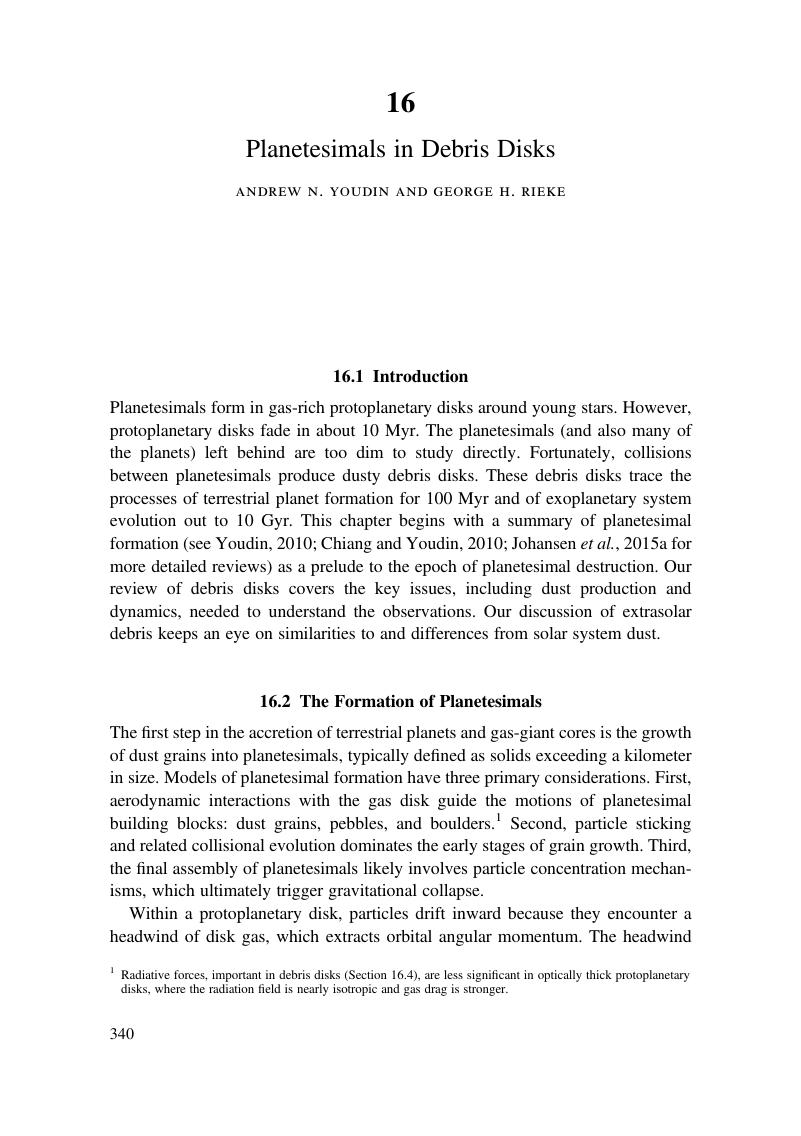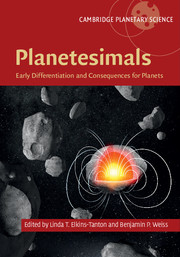Book contents
- Planetesimals
- Cambridge Planetary Science
- Planetesimals
- Copyright page
- Contents
- Contributors
- 1 Planetesimals
- Part One Dynamical Evolution
- Part Two Chemical and Mineralogical Diversity
- Part Three Asteroids as Records of Formation and Differentiation
- 13 Composition of Solar System Small Bodies
- 14 Evidence for Differentiation among Asteroid Families
- 15 Dawn at Vesta: Paradigms and Paradoxes
- 16 Planetesimals in Debris Disks
- Part Four Early Differentiation and Consequences for Planet Formation
- Index
- References
16 - Planetesimals in Debris Disks
from Part Three - Asteroids as Records of Formation and Differentiation
Published online by Cambridge University Press: 25 February 2017
- Planetesimals
- Cambridge Planetary Science
- Planetesimals
- Copyright page
- Contents
- Contributors
- 1 Planetesimals
- Part One Dynamical Evolution
- Part Two Chemical and Mineralogical Diversity
- Part Three Asteroids as Records of Formation and Differentiation
- 13 Composition of Solar System Small Bodies
- 14 Evidence for Differentiation among Asteroid Families
- 15 Dawn at Vesta: Paradigms and Paradoxes
- 16 Planetesimals in Debris Disks
- Part Four Early Differentiation and Consequences for Planet Formation
- Index
- References
Summary

Information
- Type
- Chapter
- Information
- PlanetesimalsEarly Differentiation and Consequences for Planets, pp. 340 - 362Publisher: Cambridge University PressPrint publication year: 2017
References
Accessibility standard: Unknown
Why this information is here
This section outlines the accessibility features of this content - including support for screen readers, full keyboard navigation and high-contrast display options. This may not be relevant for you.Accessibility Information
- 1
- Cited by
